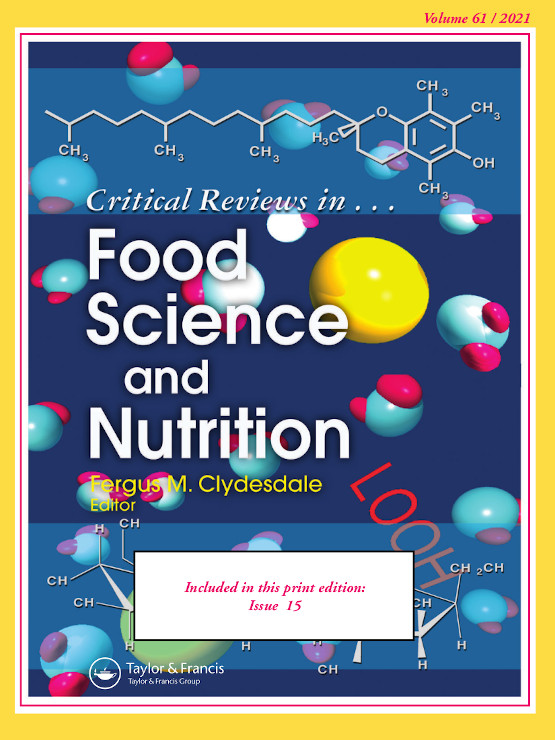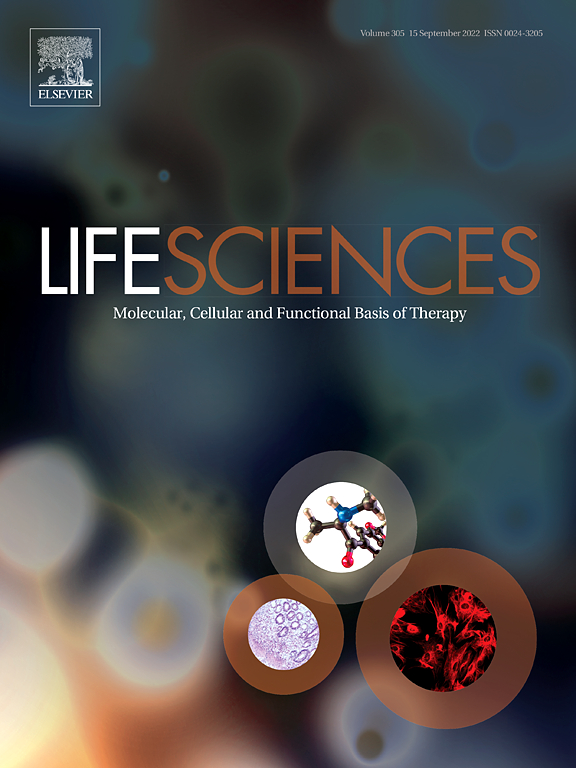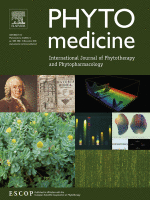Anticonvulsant
How to submit an article:
- Registered users can submit any published journal article that has a unique DOI (Digital Object Identifier) name or link to Research Hub.
- For example, you can paste the full DOI link:
https://doi.org/10.1109/5.771073or just the DOI name:10.1109/5.771073into the field above and click submit. - The person who is first to submit a valid article to Research Hub will forever be credited for it, and every article submission earns you +6 Research Points.
Published research studies are articles that present the findings of original research that has undergone a peer-review process and has been made publicly available in scholarly journals, books or other media.

A systematic review on black pepper (Piper nigrum L.): from folk uses to pharmacological applications
2019 Feb 11 Critical Reviews in Food Science and Nutrition Takooree H, Aumeeruddy MZ, Rengasamy KRR, Venugopala KN, Jeewon R, Zengin G, et al.
Systematic Review Black PepperBlack pepper, beyond its culinary use, offers medicinal benefits like antimicrobial, antioxidant, anticancer, anti-diabetic, and anti-inflammatory properties mainly attributed to the compound piperine.

The role of serotonin and its receptors on the anticonvulsant effect of curcumin in pentylenetetrazol-induced seizures
2018 Oct Life Sciences Arbabi Jahan A, Rad A, Ghanbarabadi M, Amin B, Mohammad-Zadeh M
Animal Study SerotoninCurcumin, found in turmeric, exerts anticonvulsive effects by elevating serotonin levels, influencing certain receptors, and possibly reducing 5-HT7 gene expression.

Analytical Techniques and Pharmacokinetics of Gastrodia elata Blume and Its Constituents
2017 Jul 08 Molecules Wu J, Wu B, Tang C, Zhao J
Although G. elata has been used for thousands of years in China, the lack of standardization and safety and efficacy studies vastly restricts its utilization worldwide. Since ancient times, GAS and HBA have been widely considered to be the major bioactive constituents or metabolites of G. elata in vivo. With phytochemical studies, more constituents, such as parishins and hydroxybenzyl nucleosides, have been reported to exert a greater potential effect. However, there are still multiple complications that needs to be considered such as chemical properties and utilizing for the public before further application can occur.
Review Article Tian Ma
Gastrodia elata and epilepsy: Rationale and therapeutic potential
2016 Nov Phytomedicine Matias M, Silvestre S, Falcão A, Alves G
Due to its recognised therapeutic properties, G. elata has gained an increasing interest within the scientific community and, therefore, new medicinal preparations containing G. elata rhizome itself or its bioactive components are expected to be developed in the coming years. Moreover, specific phytochemical constituents isolated from G. elata may also be considered to integrate programs of discovery and development of new anticonvulsant drug candidates.
Review Article Tian Ma Epilepsy
Neuropharmacological Potential of Gastrodia elata Blume and Its Components
2015 Jan Evidence-Based Complementary and Alternative Medicine Jang JH, Son Y, Kang SS, Bae CS, Kim JC, Kim SH, et al.
In this review, we summarized the protective effects of GE against neurodegenerative disorders and proposed the underlying mechanisms of the neuropharmacological potential of GE and its components. In addition, we confirmed that administration of vanillin, an active component of GE, ameliorates TMT-induced seizures, which may be related to the reduced neuronal death and microglial activation. Therefore, this review encourages the identification of specific GE components for use in possible preventive or therapeutic strategies for various neurodegenerative disorders and may also be helpful for the development of new treatments for incurable disorders.
Review Article Tian MaResearch insights are moderated by the Research Hub team and offer an at-a-glance overview of interesting research findings.

2019 Critical Reviews in Food Science and Nutrition
Black pepper, beyond its culinary use, offers medicinal benefits like antimicrobial, antioxidant, anticancer, anti-diabetic, and anti-inflammatory properties mainly attributed to the compound piperine.
Systematic Review Black Pepper
A systematic review on black pepper (Piper nigrum L.): from folk uses to pharmacological applications
Takooree H, Aumeeruddy MZ, Rengasamy KRR, Venugopala KN, Jeewon R, Zengin G, et al.

2018 Life Sciences
Curcumin, found in turmeric, exerts anticonvulsive effects by elevating serotonin levels, influencing certain receptors, and possibly reducing 5-HT7 gene expression.
Animal Study Serotonin
The role of serotonin and its receptors on the anticonvulsant effect of curcumin in pentylenetetrazol-induced seizures
Arbabi Jahan A, Rad A, Ghanbarabadi M, Amin B, Mohammad-Zadeh M

2014 Evidence-Based Complementary and Alternative Medicine
Honey, specifically its polyphenols, show promising signs of enhancing memory and counteracting neurodegenerative diseases by reducing oxidative stress and neuroinflammation.
Experimental Study Cognitive Function Depression Honey Nootropic
Neurological Effects of Honey: Current and Future Prospects
Mijanur Rahman M, Gan SH, Khalil MI
Review Articles
Review articles summarise and critically evaluate the current state of research on a specific topic or field by synthesising multiple primary research studies.

A systematic review on black pepper (Piper nigrum L.): from folk uses to pharmacological applications
2019 Feb 11 Critical Reviews in Food Science and Nutrition Takooree H, Aumeeruddy MZ, Rengasamy KRR, Venugopala KN, Jeewon R, Zengin G, et al.
Systematic Review Black PepperBlack pepper, beyond its culinary use, offers medicinal benefits like antimicrobial, antioxidant, anticancer, anti-diabetic, and anti-inflammatory properties mainly attributed to the compound piperine.

Analytical Techniques and Pharmacokinetics of Gastrodia elata Blume and Its Constituents
2017 Jul 08 Molecules Wu J, Wu B, Tang C, Zhao J
Although G. elata has been used for thousands of years in China, the lack of standardization and safety and efficacy studies vastly restricts its utilization worldwide. Since ancient times, GAS and HBA have been widely considered to be the major bioactive constituents or metabolites of G. elata in vivo. With phytochemical studies, more constituents, such as parishins and hydroxybenzyl nucleosides, have been reported to exert a greater potential effect. However, there are still multiple complications that needs to be considered such as chemical properties and utilizing for the public before further application can occur.
Review Article Tian Ma
Gastrodia elata and epilepsy: Rationale and therapeutic potential
2016 Nov Phytomedicine Matias M, Silvestre S, Falcão A, Alves G
Due to its recognised therapeutic properties, G. elata has gained an increasing interest within the scientific community and, therefore, new medicinal preparations containing G. elata rhizome itself or its bioactive components are expected to be developed in the coming years. Moreover, specific phytochemical constituents isolated from G. elata may also be considered to integrate programs of discovery and development of new anticonvulsant drug candidates.
Review Article Tian Ma Epilepsy
Neuropharmacological Potential of Gastrodia elata Blume and Its Components
2015 Jan Evidence-Based Complementary and Alternative Medicine Jang JH, Son Y, Kang SS, Bae CS, Kim JC, Kim SH, et al.
In this review, we summarized the protective effects of GE against neurodegenerative disorders and proposed the underlying mechanisms of the neuropharmacological potential of GE and its components. In addition, we confirmed that administration of vanillin, an active component of GE, ameliorates TMT-induced seizures, which may be related to the reduced neuronal death and microglial activation. Therefore, this review encourages the identification of specific GE components for use in possible preventive or therapeutic strategies for various neurodegenerative disorders and may also be helpful for the development of new treatments for incurable disorders.
Review Article Tian Ma
Neurological Effects of Honey: Current and Future Prospects
2014 Jan Evidence-Based Complementary and Alternative Medicine Mijanur Rahman M, Gan SH, Khalil MI
Experimental Study Review Article Depression Honey Nootropic Cognitive FunctionHoney, specifically its polyphenols, show promising signs of enhancing memory and counteracting neurodegenerative diseases by reducing oxidative stress and neuroinflammation.
Clinical Trials
Clinical trials are research studies that involve people and are conducted to evaluate the safety and efficacy of new treatments or interventions, such as drugs, medical devices, or behavioural therapies.
Study Protocols
Published study protocols are detailed plans that outline the objectives, methodology, statistical analyses, and organisation of a research study that have been made publicly available for others to review and use as a reference.
Presentation Slides

Systematic Review
Black pepper, beyond its culinary use, offers medicinal benefits like antimicrobial, antioxidant, anticancer, anti-diabetic, and anti-inflammatory properties mainly attributed to the compound piperine.
Takooree H, Aumeeruddy MZ, Rengasamy KRR, Venugopala KN, Jeewon R, Zengin G, Mahomoodally MF

Animal Study
Curcumin, found in turmeric, exerts anticonvulsive effects by elevating serotonin levels, influencing certain receptors, and possibly reducing 5-HT7 gene expression.
Arbabi Jahan A, Rad A, Ghanbarabadi M, Amin B, Mohammad-Zadeh M

Experimental Study
Honey, specifically its polyphenols, show promising signs of enhancing memory and counteracting neurodegenerative diseases by reducing oxidative stress and neuroinflammation.
Mijanur Rahman M, Gan SH, Khalil MI
Executive Summary
Write an executive summary in the form of a blog article on the topic of "Research into Chinese medicine treatment for Anticonvulsant" summarising the research below and using language that can be easily understood by patients and avoiding medical jargon using a professional and caring tone of voice.
Write an executive summary in the form of a blog article on the topic of "Researched Chinese medicine treatments for Anticonvulsant" summarising the research below in an objective and easy to understand way, and using language that can be easily understood by patients. Group the article into Chinese medicine treatments first, followed by nutrition and other treatments. Avoid using medical jargon and use a professional and caring tone of voice.
Write me a concise but easy to understand executive summary on the topic of "Chinese medicine treatments for Anticonvulsant" based on the following research that I will give you. Your summary should be 2 paragraphs long in Australian English spelling and include references to the studies.
A Systematic Review published in 2019 in the journal Critical Reviews in Food Science and Nutrition found that Black pepper, beyond its culinary use, offers medicinal benefits like antimicrobial, antioxidant, anticancer, anti-diabetic, and anti-inflammatory properties mainly attributed to the compound piperine. The study was a systematic review of existing scientific data on the traditional uses, composition, and pharmacological attributes of black pepper. Information was gathered from recognized databases such as Science Direct and Google Scholar, as well as books and other online resources. The study primarily focused on literature in English and evaluated traditional medicinal uses of black pepper in various regions, the common ailments it was used to address, and the preferred modes of preparation. The results of the study affirm the significant medicinal qualities of black pepper. Its antimicrobial activity was demonstrated against various pathogens, and it showed strong antioxidant effects against several reactive oxygen and nitrogen species. The research also highlighted the anticancer effects of black pepper on cell lines from various sites including breast, colon, cervix, and prostate. Furthermore, the benefits of black pepper in managing diabetes and lipid levels in the body were also confirmed. It was also noted for its anti-inflammatory, analgesic, anticonvulsant, and neuroprotective effects. Piperine was identified as the major bioactive compound in black pepper which is responsible for these beneficial effects along with other compounds such as piperic acid, piperlonguminine, and more.
A Animal Study published in 2018 in the journal Life Sciences found that Curcumin, found in turmeric, exerts anticonvulsive effects by elevating serotonin levels, influencing certain receptors, and possibly reducing 5-HT7 gene expression. In the experiment, 110 mice were partitioned into 11 groups. Curcumin and serotonin's roles were examined in the first four groups, employing curcumin and PCPA to deplete brain serotonin levels. The fifth group was treated with four different substances followed by curcumin. The sixth group was given NAD-299, then curcumin. The other groups, seven to eleven, received various antagonists along with curcumin. A convulsant (PTZ) was injected into all mice after administering curcumin. Key observations included that serotonin depletion reversed some of curcumin's anticonvulsant effects. Different serotonin receptor antagonists had distinct influences on the effectiveness of curcumin. Lastly, a reduction in 5-HT7 gene expression was noted following curcumin injection, supporting a potential mechanism for its anticonvulsive action.
A Experimental Study published in 2014 in the journal Evidence-Based Complementary and Alternative Medicine found that Honey, specifically its polyphenols, show promising signs of enhancing memory and counteracting neurodegenerative diseases by reducing oxidative stress and neuroinflammation. The research focuses on the analysis of the nootropic and neuropharmacological benefits of honey, with particular emphasis on its polyphenol constituents. Essentially, honey's nutritional and physiological effects on memory enhancement and various neurological activities have been examined. This study delves into the mechanistic approach in which honey, as a natural compound, can mitigate oxidative stress while enhancing the cellular antioxidant defense system - a cue to its potential role in neutralizing reactive oxygen species that have harmful effects on neurological health. The findings from the research suggest that honey and its polyphenols play a noteworthy role in neuronal health. They display a potential ability to improve memory deficits and other neurodegenerative diseases. In particular, honey polyphenols have been associated with apoptosis activities and the reduction of microglia-induced neuroinflammation. Furthermore, the direct involvement of these polyphenols in synaptic plasticity was found, which could have a substantial effect on the behavior-modulating neural circuitry. Overall, these findings indicate the possible therapeutic value of honey and its polyphenols on the health of the neurological system.
Moderation Tools
Topic
Sign In
Users not signed in are limited to viewing the 5 most recent items of content.